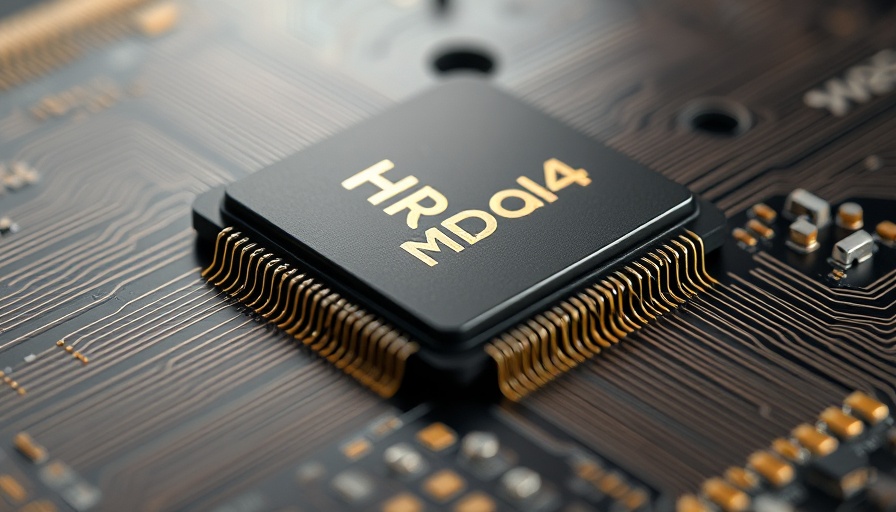
The Next Level in High-Bandwidth Memory
In a bold stride forward, Micron has shaken up the high-bandwidth memory (HBM) landscape with its introduction of HBM4 memory, boasting an impressive bandwidth of 2.8TB/s. This significant leap not only eclipses the previous JEDEC HBM4 specification of 2TB/s but also places Micron ahead of competitors such as Samsung and SK Hynix, who are also chasing similar advancements in this burgeoning market.
Why HBM4 Matters for Homeowners
As everyday technology becomes more connected, the role of high-performance components is increasing—especially in smart home environments where speed and capability are key. The management of vast amounts of data, from home automation systems to energy efficiency solutions, relies heavily on advanced memory technology. HBM4, with its enhanced bandwidth and efficiency, could well represent the future of home technology solutions, enabling faster data processing and more responsive AI solutions in everyday devices.
Customization and Customer Collaboration
Micron's planned HBM4E customization capabilities signal a transformational change in the memory sector. As reported by CEO Sanjay Mehrotra, the potential for tailoring memory stacks to meet specific needs allows companies to better optimize performance, particularly in devices requiring rapid processing. This bespoke approach allows for better integration with smart home technologies, creating appealing options for tech-savvy homeowners eager to enhance their properties with the latest innovations.
The Shift Towards AI-Driven Technologies
As artificial intelligence (AI) continues to influence home technology—enabling smart systems to learn user preferences and optimize energy use—memory technology must keep pace. Micron’s HBM4 promises to not only support existing AI platforms but significantly enhance their capacity. With every appliance and gadget in a smart home increasingly powered by AI, advancements like HBM4 could revolutionize how these devices operate together, making homes even more efficient.
What's Next for Micron and the HBM Market
With Micron reporting an annualized revenue run rate nearing $8 billion, the company is clearly committed to expanding its footprint in the HBM market. As competition heats up, it will be fascinating to observe how these advancements influence the pricing and availability of smart devices. For homeowners in London, staying abreast of these changes might not only lead to smarter purchases but could also offer insights into the technological evolution influencing property value and sustainability.
Empowering Future Technologies
The impending shift to enhanced memory solutions like HBM4 signifies much more than just faster processing speeds; it demonstrates a broader transition towards smarter, more efficient home ecosystems. As Micron accelerates its production plans for HBM4E, potential collaborations with major tech giants like Nvidia and AMD hint at a future where memory technology can be seamlessly integrated into every facet of our lives. This development is especially relevant for young homeowners looking to embrace smart and connected homes, enhancing both their living experience and potentially their property’s value.
 Add Row
Add Row  Add
Add 




Write A Comment